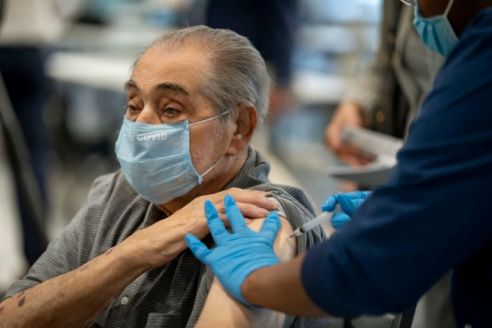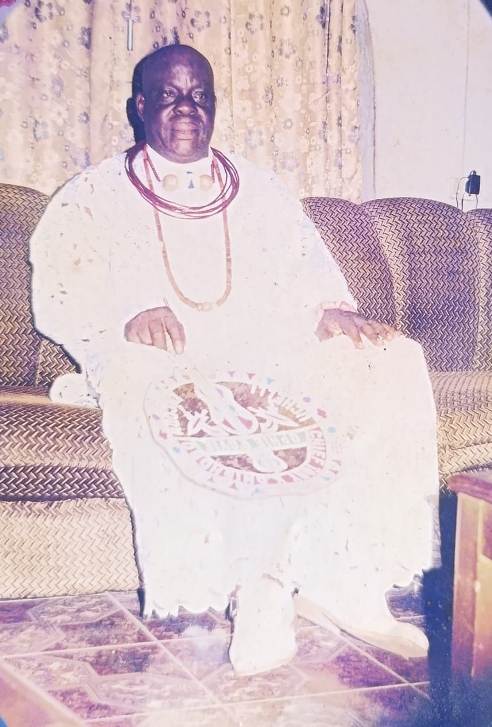
LAGOS JANUARY 12TH (NEWSRANGERS)-Diane Kearns sat at her old-school wooden desk, black hair pulled into a ponytail and face devoid of makeup, and prepared to go to war.
The Austin, Texas, mother of three was fiercely focused on one thing: finding a COVID-19 vaccine for her 18-year-old son, Dean, whose disabilities include cerebral palsy, seizure disorder and legal blindness.
Kearns picked up her Android phone on Dec. 30 and started punching in numbers. Between pounding coffee and banana nut bread, she called 15 grocery stores that had received vaccines. She called Dean’s doctor. She called pharmacies.
No. No. No. They were out of vaccine. They served only first responders. They took only current patients. They accepted only people on waiting lists.
And still, she kept calling, anywhere she could think of, at one point simultaneously using her landline and cellphone, knowing she’d be on hold for a while.
Related: Are you still contagious after getting the COVID vaccine?
She drank more coffee. She ate more banana nut bread. And she got angry – though that didn’t stop her.
“That anger drives a lot of my action,” Kearns said.
Anger and frustration are surging across the country as the federal government leaves states to handle the distribution of COVID-19 vaccines. Through Friday, states had received 22.1 million doses of the vaccines. Of those, about 6.7 million – less than one-third – had been administered.
Poor messaging and inconsistent procedures are forcing people to scramble on their own to find vaccines.
For a 71-year-old Florida man and his 66-year-old wife, the chaos meant rising before dawn to get in line for a vaccine, only to be turned away after learning many of the supplies had been given out to people who’d camped overnight, against the express wishes of authorities.
For a Texas man and advocate of getting aid for the Hispanic community during COVID-19, it means he can’t find a way to vaccinate his 93-year-old grandmother, who spends all day in her recliner and refuses to go outside for fear of catching the virus.
And for Kearns, 54, it means extending her family’s 11-month lockdown. Her husband, who recently got COVID-19 while taking care of his 96-year-old father, had to leave home for weeks. Her children have been quarantined to their rooms and everyone has had to wear masks around Dean. They canceled Thanksgiving and Christmas festivities with family.
“I can’t think of the last time I kissed anybody,” Kearns said. “Probably February. Because there’s such fear. I miss hugging my family.”
‘Falling through the cracks’
Federal officials point to a host of reasons for the lag in vaccine distributions, including vaccination systems still gearing up, federal funding that hasn’t yet been disbursed to states and a requirement that states set aside vaccines for long-term-care facilities.
Add to that two holidays, bad weather in some areas and the need to train medical professionals to prepare and administer two vaccines that require special storage and handling.
A hodgepodge of rules and procedures across the country adds to the confusion. In Florida, for example, seniors 65 and older are in the first phase of vaccine distribution. In Texas, seniors and medically fragile people are in the second phase. In New York, they are in the third phase.
Richard Paiva, a 71-year-old retired advertising man from DeLand, Florida, and his 66-year-old wife, Aida, were determined to get one of the 1,000 vaccines given out on Jan. 4 at a football stadium in nearby Daytona Beach. They’d considered camping out until area officials specifically told people not to do that.
So at 5:30 a.m., they climbed into their Toyota Sienna – loaded with bananas, bread, cashews, applesauce, energy bars and sliced pineapples – and headed for Daytona Stadium.
They got trapped in a massive traffic jam that stretched for miles. Other drivers tried to nose their way in front of the Paivas. Richard let a few in, but when another car came within inches of their minivan, Paiva honked his horn and waved the driver away.
“If you let that second car in, I’ll stab you,” his wife joked.
By 6:30 a.m., the thousand vaccines were gone. Because so many people had camped out the night before, officials had opened the stadium gates early, an hour before the Paivas even left home.
Richard Paiva is still angry. He feels the rule-breakers were rewarded and officials should have anticipated what would happen when there are more than 137,000 seniors in Volusia County.
“This would be like throwing one 16-ounce steak into a cage of 137,000 famished tigers,” he said. “What could go wrong with this picture? I don’t know what they expected to happen.”
More shots were offered the next day, but the Paivas didn’t go. They didn’t trust that the same thing wouldn’t happen. Still, they will eventually try again.
“Hopefully, different, more improved plans, developed and hosted by more competent authorities than those running the Daytona Stadium debacle, will be offered in our area soon,” Richard Paiva said. “When they are, we will be there.”
For Omar Gomez, who lives just south of Austin, Texas, efforts to secure a vaccine for his 93-year-old grandmother have also been fruitless.
The engineer and oldest of five children has been doing his best to stay on top of vaccine news to help his older relatives. He volunteers with the Austin Latino Coalition, a group focused on helping the Hispanic community during the pandemic. Gomez has heard about the shortage of vaccines and worries his community will have a particularly difficult time accessing them.
After he drove to his local grocery store pharmacy to check for the shots, he was told they were out and to check in next week. He was also told that his grandmother would have to register online for her shot. But his grandmother can’t read or write English and is barely literate in Spanish.
“In my mind, there’s bells going off,” Gomez said. “If my grandmother didn’t have a family that was computer literate, how would she sign up?”
The Austin Latino Coalition notes that vaccines in the area have mostly been provided to pharmacies and distributors west of Interstate 35 when many people of color live in poverty on the east side. Some have no transportation to the distribution sites. Some don’t speak English or are afraid to go to these sites for fear they’ll be deported. Others don’t have an internet connection to find distribution sites or sign up for waiting lists. And many materials have not been translated into Spanish, said Paul Saldaña with the coalition.
As of Jan. 7, Hispanics made up 48% of the 565 people to die of COVID-19 in Travis County, where Austin is the metropolitan center. Despite that, they’re not getting the attention they deserve, he said.
“The fact remains that our poor, minority families are falling through the cracks,” he said.
‘There’s a lot of anger’
While Diane Kearns struggled to find a shot for her son, her quest to secure vaccines for her son’s attendants paid off more quickly.
By late December, Texas seniors 65 and older, as well as people with qualifying disabilities, were eligible for COVID-19 vaccines. But medical professionals were still trying to get shots to front-line workers, which included Dean’s five paid caretakers. After hearing that the attendant for a friend’s child had gotten the shot, Kearns started her mission to snatch up some of those vaccines.
Within a few days, four of the five had received shots – from the 16th grocery store Kearns called. The fifth caregiver wanted to wait a while to see whether the vaccines had any bad side effects.
That left Kearns solely focused on Dean, who is nonverbal and uses a wheelchair. But the answers she had gotten at the start of her search didn’t change. Bottom line: demand far outweighed supply.
By last week, Kearns had hit the wall. She’d been on a waiting list at a local grocery store, only to learn the store had eliminated the waiting list and now required everyone to sign up online.
She called the local children’s hospital, but they were still giving shots to front-line workers. She called a second hospital and was told they didn’t know when they’d be getting COVID-19 vaccines.
Kearns called her local legislator and left a message. She scoured the Facebook pages of other elected officials for news. She even tried to call the head of the state health department and was told to monitor their website for new announcements.
The stress at home is through the roof. Any cough or sneeze is looked at with suspicion. Everyone’s nerves are frayed. They’re tired of hunkering down at home. Even Dean – who can only say “mom” and “Where are we going?” – is yelling in frustration because he misses being social and seeing people.
“We don’t cry,” Kearns said. “We yell at each other. There’s a lot of anger. I try to be calm and Zen and think of where is this anger coming from.”
She skips the makeup and wears stretchy pants to accommodate the weight she’s gained on lockdown. Who cares? It’s not like she’s going anywhere.
And yet, Kearns remains optimistic. This war will end. She guesses Dean will get his vaccine in February. The rest of the family will just have to wait their turn.
USA TODAY








